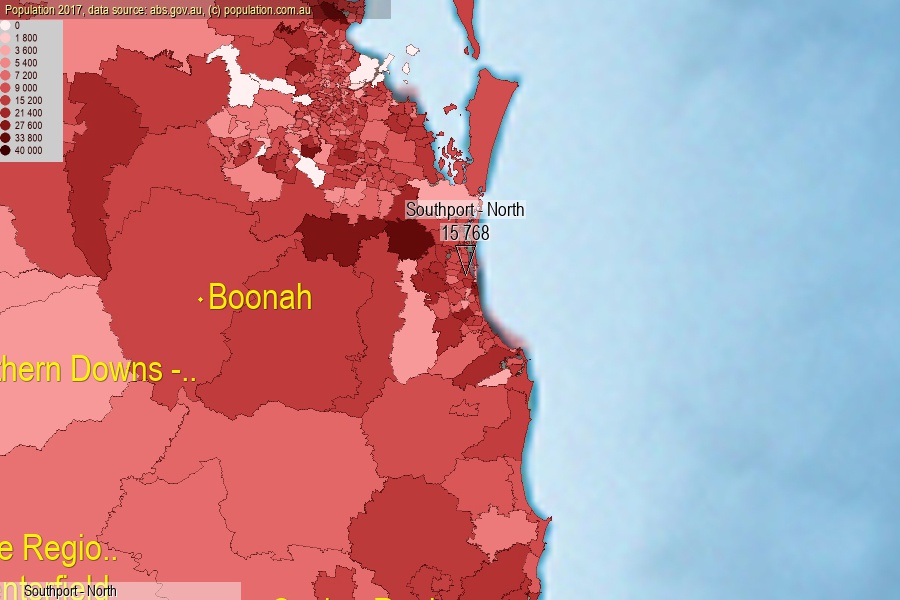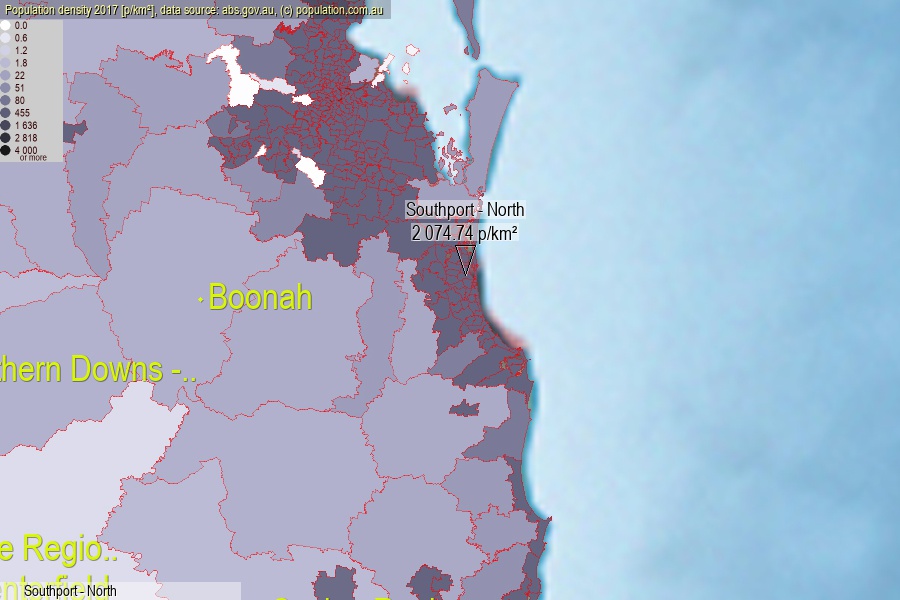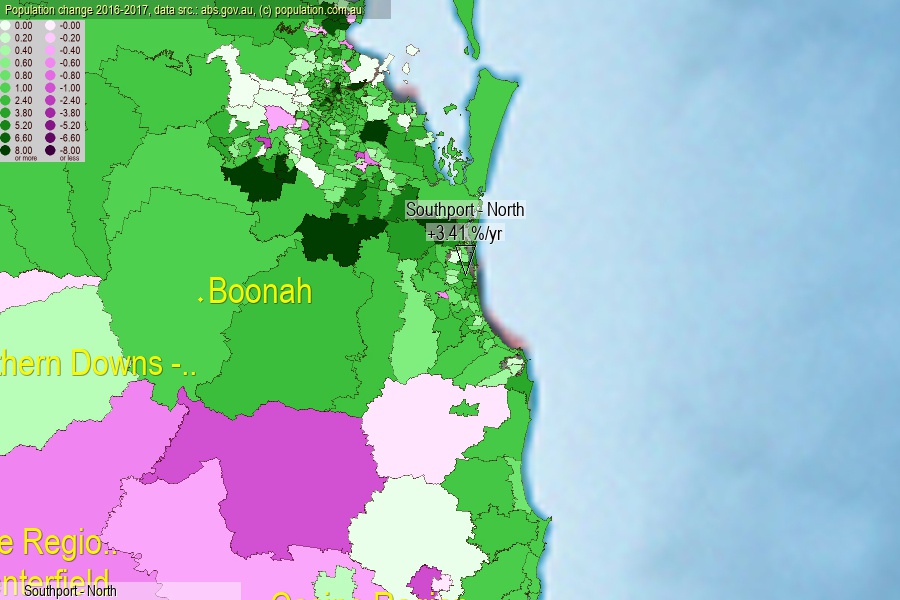 population.com.au
population.com.auLast official estimated population of Southport - North (as Statistical Area Level 2) was 15 768 people (on 2017-06-30)[2]. This was 0.06% of total Australian population and 0.316% of QLD population. Area of Southport - North is 7.60 km², in this year population density was 2 074.74 p/km² . If population growth rate would be same as in period 2016-2017 (+3.41%/yr), Southport - North population in 2025 would be 20 620. [0]



Click to enlarge. Southport - North is located in the center of the images.
Population [people], population density [p./km²] and population change [%/year] [2]
View borders » (new window) [4]
[2001-2002] +2.56 %/Yr.
[2002-2003] +2.19 %/Yr.
[2003-2004] +1.44 %/Yr.
[2004-2005] +2.26 %/Yr.
[2005-2006] +6.25 %/Yr.
[2006-2007] +6.07 %/Yr.
[2007-2008] +5.01 %/Yr.
[2008-2009] +6.88 %/Yr.
[2009-2010] +5.91 %/Yr.
[2010-2011] +3.25 %/Yr.
[2011-2012] +3.35 %/Yr.
[2012-2013] +2.51 %/Yr.
[2013-2014] +3.09 %/Yr.
[2014-2015] +3.51 %/Yr.
[2015-2016] +3.31 %/Yr.
[2016-2017] +3.41 %/Yr.
[0] Calculated with linear interpolation from officially estimated population
[1] Read more about SA2 and Australian Statistical Geography Standard (ASGS) on abs.gov.au
[2] Population data from Australian Bureau of Statistics (Population and density: 2017; change: 2016-2017)
[3] Digital Boundaries: Australian Statistical Geography Standard (ASGS) 2016.
[4] Border coordinates are simplifyed using Ramer-Douglas-Peucker algorithm.